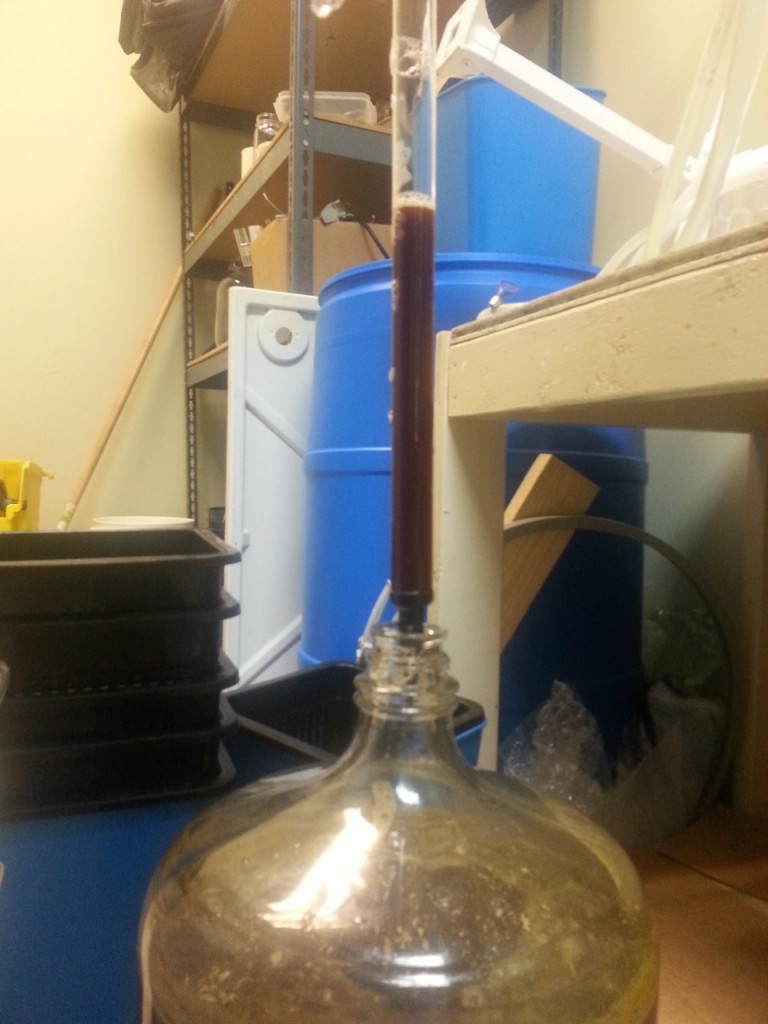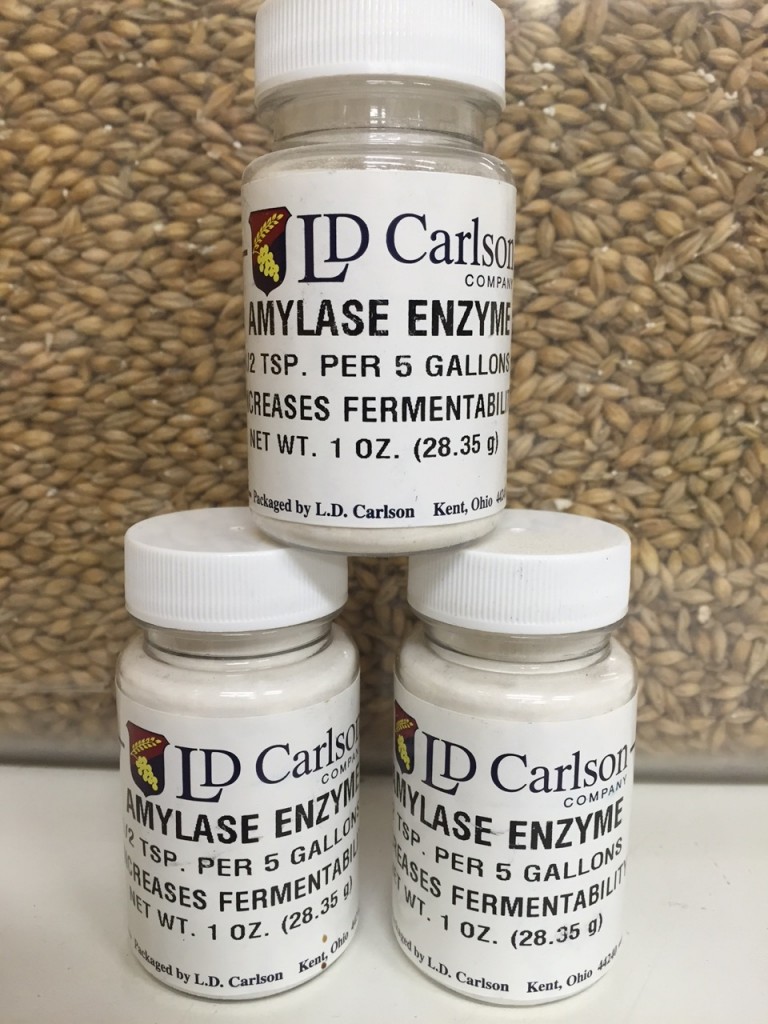
Do you have a stuck fermentation? A beer that stopped fermenting and you don’t know why? Maybe it was active for a day or two and stopped all together for a week or more? In that case, you need to take a sample with your wine thief, and measure the gravity of the beer in a test jar with a hydrometer. If you do so and the hydrometer reads something that is very high in gravity, or brixx/balling, you may have a “stuck” fermentation. Something happened to halt fermentation in your beer, and the expected alcohol content is not achieved. A good example may be a high gravity beer that has a specific gravity (another way of measuring sugar content) of say 1.090. When fermentation is complete, which involves converting most of the sugars to alcohol, the gravity reading you might get would be around 1.020.
To figure out the alcohol content of this beer when finished, do some simple math: 1.090-1.020= 0.070; multiply that number by the special-secret-multiplying-factor 131.25 and you get 9.1875, or roughly 9. This beer would be about 9% abv.
But what if the beer starts out at a gravity of 1.090, as expected, and quits actively fermenting after a day? You wait a week, but nothing seems to be happening. To determine if your fermentation is “stuck”, take a sample with the wine thief and test the sample with a hydrometer in a test jar. Let’s say you get a reading of 1.060. According to our formula, 1.090-1.060=0.03, which multiplied by 131.25=3.9375, or just under 4. This beer is “stuck” at just under 4% abv. What might’ve happened here?
Well, a lot of things may have gone wrong to halt fermentation. Maybe the room temperature is too low, and the yeast cluster together and precipitate out, falling to the bottom in a hibernation, awaiting better temperature conditions. That can be fixed with warmer temps in another space, or being closer to some heat source. Maybe there wasn’t the small but necessary diffused Oxygen to get an adequate ferment out of your yeast. Sometimes simply transferring the beer to another vessel (gently) will introduce just enough Oxygen to restart fermentation without risking oxidation’s many pitfalls (infection, off flavors, etc.) Maybe the pH is so far off that fermentation has fizzled out. That can be adjusted with pH additives.
If nothing works, perhaps the grain mashing temps and the sugar’s enzymatic conversions necessary for alcohol production were off. In that case, you may consider adding Amylase Enzyme. This enzyme blend, featuring Alpha and Beta Amylase enzymes, are the same found in the malts used in brewing beer. The action of these enzymes (Beta at 131-150f and Alpha at 154-167f) in your mash do the good work of converting non-fermentable, long chain starches into fermentable simple sugars. Thanks enzymes! It is imperative that you have these enzymes work on your malts or you will have a lot of sugars, and not all will be fermentable. A low alcohol, overly-sweet beer (usually not too good tasting) is the result. If you add Amylase Enzyme blend to the stuck beer, you may find that, due to continued enzyme activity in converting sugars, fermentation starts again. Remaining non-fermentable complex sugars may have been converted to fermentable, simple sugars and alcohol production can continue. Pretty cool, huh?

So consider adding Amylase Enzyme to your brewing master’s tool kit. For only $1.99 for 2 oz, with a tiny application rate of .01-.03 tsp/gal, you can’t go wrong. Consider adding it to a high abv beer (or grain-based wash) right along with yeast to get maximum alcohol-making performance.

Anthony says
For a higher ANV would you increase the amount of Amylase added?
Anthony says
Sorry, “ABV”